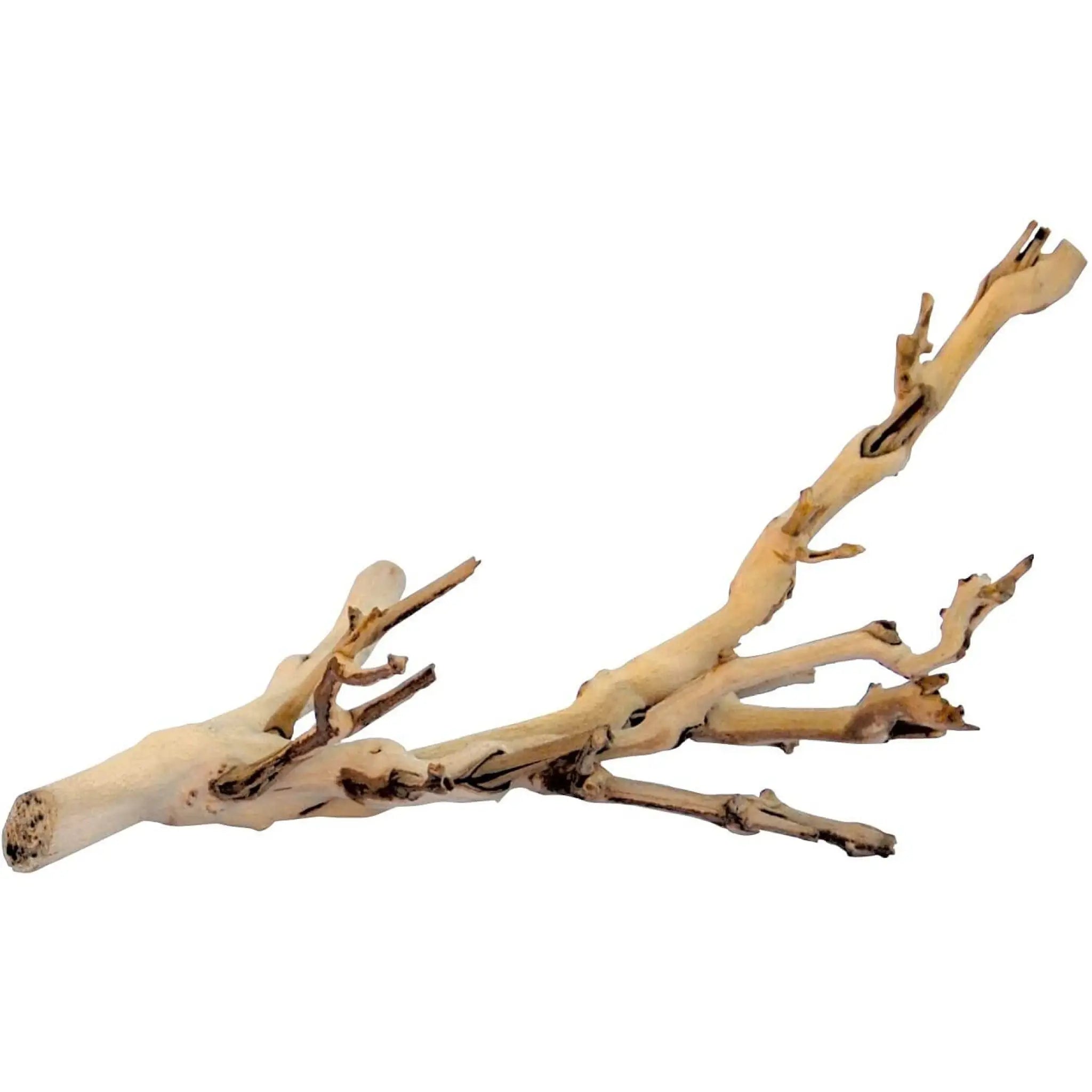
Uromastyx – The Incredible Agamid with a Funny Name
by Luke Tansley on in Lizards
I remember well when I first met Uromastyx. It was during a stint at a local independent reptile and fish store where I had taken the position of assistant manager. At the time, I had only been in the reptile industry a few years and was the editor for the San Diego Herpetological Society newsletter. To be honest, I knew some reptiles more of the common species were easily identifiable to me just by looking at them I could tell you what they were, what they ate, and I could recite their general captive care requirements from memory.
It was a morning like any other. The shop manager and I were going about the daily routine where I would water and clean rodent enclosures, spray amphibian habitats etc. The manager had to just come back from the grocery store with greens for the tortoises, Bearded Dragons Pogona vitticeps, and Green Iguanas Iguana iguana. While I was feeding he pointed to an enclosure that I had in my few days never noticed as I had never seen anything in it. He said to me to make sure to put a dish of seven bean soup into it.
Naturally, I looked at him with what must have been a somewhat quizzical look as his next statement proved.
‘It’s for the Uromastyx.’ He said.
‘The who?’
‘The Uro’s.’
He decided it would be better to show me and brought me over to the enclosure and slid back the screen top after moving the heating element off of it. After which, he reached inside and removed the large hide box revealing what to this day I consider the most beautiful and interesting lizard I have ever seen in captivity! There below me were 3 lizards which looked like what can only be described as yellow painted dinosaurs. Later on when asked to describe Uromastyx I would tell people to imagine a turtle out of its shell which had been finger painted by a three year old.
No matter how you care to describe the Uromastyx which are known by several common names such as Spiny Tails, Spiny Tailed Agama, or Dabb Lizards they are an Agamid species which deserves more than a second glance from any serious reptile keeper that is interested in keeping a lizard. I would challenge any Bearded Dragon enthusiast to keep this species and not fall in love with them. They are not only just as tractable as their cousins but in my personal opinion they are actually a more interesting species to keep as we are still figuring out a lot of their behaviors and even some of their captive care requirements.
Uromastyx hail from Africa and the Middle East and most are considered to be a desert species but there are also some which are found in the montane areas as well. When speaking of desert species most would think of Leopard Geckos Eublepharis macularius and Bearded Dragons P. vitticeps but the Uromastyx species take arid to a whole new level of hot. Basking temperatures are in the average of 130ºF! But we'll get to that later for right now lets take a look at the species within the genus of Uromastyx. All totalled the Uromastyx genus has approximately 18 recognized species currently. I say approximately due to the fact that taxonomists are still figuring out how the species all relate to one another and which are actual species and which are subspecies. The three species often found at Northampton Reptile Centre are as follows; and is dependant on breeder availability as they never sell wild caught Uromastyx.
Uromastyx Species
Uromastyx acanthinura which occur in North Africa. These Uromastyx can obtain an overall length of 40 cm. The typical coloration is variable within the species. The head of most is typically black in coloration while the body can represent a netlike coloration of yellow, gray, red, and green.
Uromastyx ocellata occurs in Northwest Somalia, Djibouti, Eritrea, North Sudan, and Southeast Egypt. The same description could be used as was for the U. ornata. This is a scale counter or Taxonomists call that I would rather leave to the academe of the herp industry. I have however seen high orange color morph as well as a tan and white morph as well as a high blue color morph.
U. geryi, Niger Uromastyx occur in South Algeria, Mali, and Niger in the Air mountains which are north of Agadez and East of Arlit. They also occur in the Hoggar mountains of Algeria which are located southeast of Adrar. They usually appear in the industry as red, orange, or yellow. Males are considerably brighter than females.
Housing a Uro
When considering the purchase of Uromastyx we must first consider the topic of room available for the enclosure. Uromastyx are not known for their lackadaisical behavior they are consummate explorers and therefore must be provided room to do so. This is best done with a vivarium that measures no less than 4’x2’x2′. Within this enclosure you will need to provide multiple hide boxes & plenty of basking area where the Uromastyx can heat up. One final caveat when keeping Uromastyx is the fact that they enjoy tunnels which lead to the hide area. Uromastyx are natural burrowers which if given opportunity will display this behavior in captivity. The tunnel could be as simple as dryer vent hosing or even clay pipes which the Uromastyx can climb through to get to their hide box.
Heating & Lighting
As we are all aware, or at least should be, that reptiles are ectothermic. This means that they depend on the ambient or outside temperature to regulate their own body heat for activity and digestion. Now then, Uromastyx take this element to the extreme. As we stated above they require a basking spot heat of 130 degrees Fahrenheit and an ambient temperature of at least ninety degrees. To maintain these I recommend incandescent lighting elements. To this we add the needed 10% UVB fluorescent bulb which must be changed out every six months as they lose their intensity. Now then there are products which claim to provide both UVB and heat (mercury vapour & metal halide) and I have heard great reviews of them but I have not used them and I prefer to keep the UVB and basking lights separate that way if the UVB or the heating element fails I can replace it without much expense.
Substrates
When we say desert species most people think of the sandy Sahara type deserts. While accurate, this is in fact not where Uromastyx are found. They inhabit areas which are a mixture of sand and clay soil types which will hold the shape of the burrows that they dig. So what substrate is best for the Uromastyx? This is still somewhat debated but for my personal tastes I use washed, fine sand with lots of slate pieces or rock outcroppings with a lot of success. Some recommend the use of bird or millet seed which the Uromastyx will also eat. The final choice however is up to you. There is still a lot of argument about whether particulate substrates cause impaction and within the decades that I have used the sand I have never had any Uromastyx become impacted.
(note from editor: not sure if they have excavator clay in the U.S, but it pretty much fits exactly to what John is describing above).
Feeding
Uromastyx are vegetarian reptiles and are not omnivores as some would have you believe. I have read numerous studies of herpetologists doing field work and they all agree. The only time a Uromastyx will eat an insect or bug in the wild is then that bug gets in the path of a Uro feeding on its plant matter. The main part of the Uromastyx diet should consist of a spring mix of vegetables which can be purchased at any local grocer as well as dandelion greens, turnip greens, collard greens, and frozen mixed vegetables that have been defrosted. These should all be dusted with a calcium supplement. You can also add a dry bean soup mix to the diet as well which they will eat ravenously. To feed the babies the dry beans simply grind them up and then feed them as a topping to their salad mixture.
Water
Never offer a water dish to Uromastyx as this has the potential to increase the humidity in the enclosure which will cause skin issues in Uromastyx. They will get all the water they need from their herbivorous diet that they are being given.
A whole new lizard
Now with the above and some further information from the folks at the Northampton Reptile Centre you are well on your way to experiencing a whole new aspect of lizard keeping which will not only be fulfilling but also an incredible addition to the family environment. So what are you waiting for? Get over to the store and check out one of these incredible Agamids with the funny name. I guarantee you will not be disappointed with your purchase.






